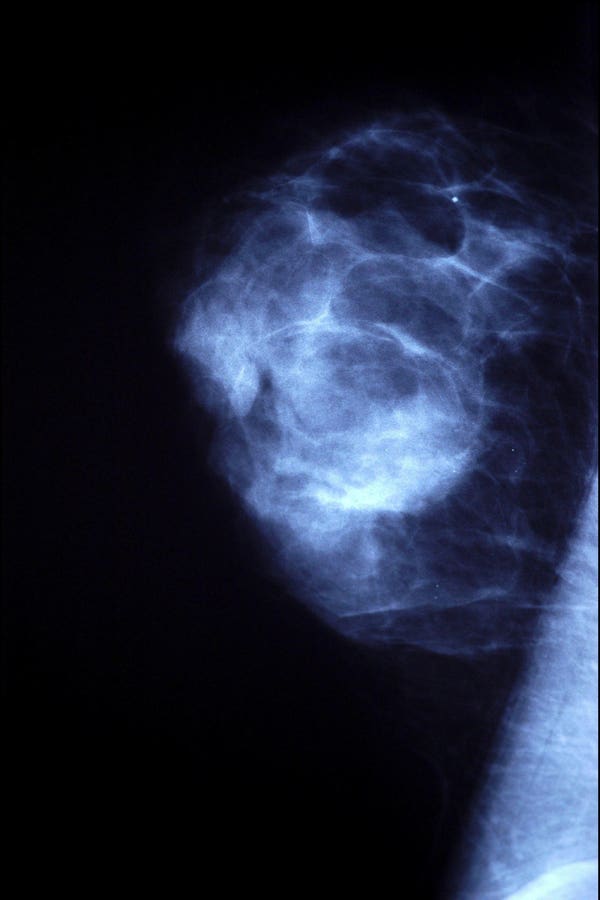October is Breast Cancer Awareness Month, and public health professionals dedicate their efforts this month in promoting mammogram screening for women in an effort to save as many lives as possible from breast cancer. Although breast cancer is often perceived as a female disease, men also can get breast cancer. Here is what you should know.
How Common Is Male Breast Cancer?
For American women, after some types of skin cancer, breast cancer is the most common cancer diagnosed. According to the American Cancer Society, a woman’s lifetime risk in developing breast cancer sometime in her life is 13%, or a one in eight chance. For men, the lifetime risk of getting breast cancer is one in 833.
Only one of every 100 diagnosed breast cancers occur in a man, according to the CDC. To put this into perspective, nearly 298,000 cases of invasive breast cancer will be diagnosed in women this year, compared to just 2,800 in men, according to the American Cancer Society.
Men can get breast cancer because males also possess breast tissue; which includes milk ducts, glands and nipples—locations where breast cancer can occur. Females typically grow much more breast tissue than men, particularly after puberty.
Risk Factors For Male Breast Cancer
Many of the factors that predispose men to breast cancer are similar to those for women. For example, a positive family history of breast cancer, increased age and certain genetic mutations such as BRCA1/BRCA2 can increase one’s risk of breast cancer, regardless of one’s sex. Also, conditions that increase one’s estrogen levels such as obesity and liver disease can also increase the risk of getting breast cancer in both men and women.
Risks factors unique to men include having previous inflammation to the testicles, surgical removal of the testicles, or being born with more than one X chromosome, a condition known as Klinefelter Syndrome.
What Are The Signs And Symptoms Of Male Breast Cancer?
Symptoms for breast cancer are largely the same for men and women. These include feeling a lump in your breast, any discharge from the nipple, changes to the nipple such as scaling or the nipple turning inward and redness or flaky skin in the breast. Although some of these symptoms can occur without the presence of cancer, you should make an appointment with your doctor if you see or experience any of those symptoms.
How Is Male Breast Cancer Diagnosed And Treated?
Both men and women usually undergo the same diagnostic tests when trying to identify breast cancer. For example, men or women who feel a lump in their breast will usually go on to get a mammogram, which are low-dose x-ray images geared toward detecting any abnormalities in the breast such as suspicious masses or lesions.
If an abnormality is present on a mammogram, additional studies and procedures could include an ultrasound, MRI or even a biopsy to confirm a specific diagnosis.
As for women, treatment for male breast cancer can vary depending on the size of the tumor, the extent to which it has spread in the body and whether the cancer is sensitive to certain hormones. Treatment can include a variety of strategies which include surgical removal of a lump, surgical removal of the entire breast, radiation therapy, chemotherapy, hormone therapy or a combination of these.
Differences Between Male And Female Breast Cancer And Challenges Unique To Men
There are racial differences with respect to how common breast cancer is for both males and females. According to the American Cancer Society, in America, White women are slightly more likely to develop breast cancer when compared to Black women. However, for males, breast cancer incidence rates are 52% higher for Black men compared to White men.
The risk of breast cancer increases with age for both males and females, but men on average are diagnosed with breast cancer later than females. The average age of a woman diagnosed with breast cancer is 62, but is 68 for a man.
Because breast cancer is diagnosed at an older age for men compared to women, the cancer can present at a more advanced stage and can lead to poor outcomes. This challenge can be compounded by the fact that men are not screened for cancer, are often unaware of heralding symptoms of cancer and may ignore symptoms due to fear of emasculation. Furthermore, men may experience stigma in having to cope with a cancer that is often perceived as a cancer of women.
Dr. Cynthia Lynch, medical director of the Breast Cancer Center at City of Hope Phoenix, states, “Given this is primarily a malignancy in women, studies have identified that men can feel isolated in their diagnosis.”
In an effort to ameliorate this stigma, spreading awareness on male breast cancer and its common symptoms should be a public health priority to ensure feelings of anxiety are alleviated.
Although rare, male breast cancer does exist and understanding it can help you identify it, should you or one of your loved ones be diagnosed with it.
Read the full article here





